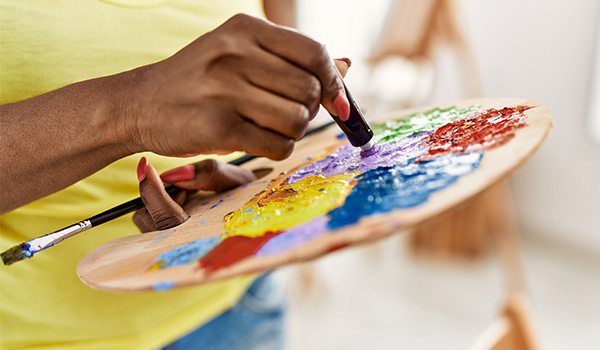Art Therapy
Why Art Therapy?
- Art therapy is a form of psychotherapy that combines psychotherapy and the creative process to promote transformation, growth, and healing.
- Art therapy relies on active art-making, the creative process, neuroscience, applied psychological theory, human experience, and the psychotherapeutic relationship.
- Throughout the art process, the art therapist’s job is to create a safe environment for expression. Art therapy can offer an alternative way for children and adults to express feelings that may be difficult to express verbally.
- Goals of art therapy may include stress reduction, increased self-awareness, increased self-esteem, and the facilitation of healthier relationships with self and others.

Who Is Art Therapy For?
- Individuals, couples, families, groups, and communities can all benefit from art therapy.
- Art therapy is effective for people of all ages.
- No previous art experience or ability is needed for art therapy.
Art Therapy Theoretical Orientation
A theoretical orientation describes the theories of psychology the therapist aligns with and how they approach mental health.
Our Art Therapists at Morningsong Therapy Center draw from the Healing Centered Engagement model, the Expressive Therapies Continuum model, Adlerian psychology, Somatic psychology, mindfulness theory, and Nature-Based Therapy. To learn more about these wellness models, the Art Therapy staff welcome any questions clients may have.
Art Therapy Risks
The art therapy process can bring up emotions, memories, and thoughts that are difficult and/or painful for the client to experience and the client has the right and responsibility to communicate to the art therapist if feeling overwhelmed. Art materials can also pose risks and it is the client’s responsibility to notify the art therapist of any known allergies or aversions to art materials.